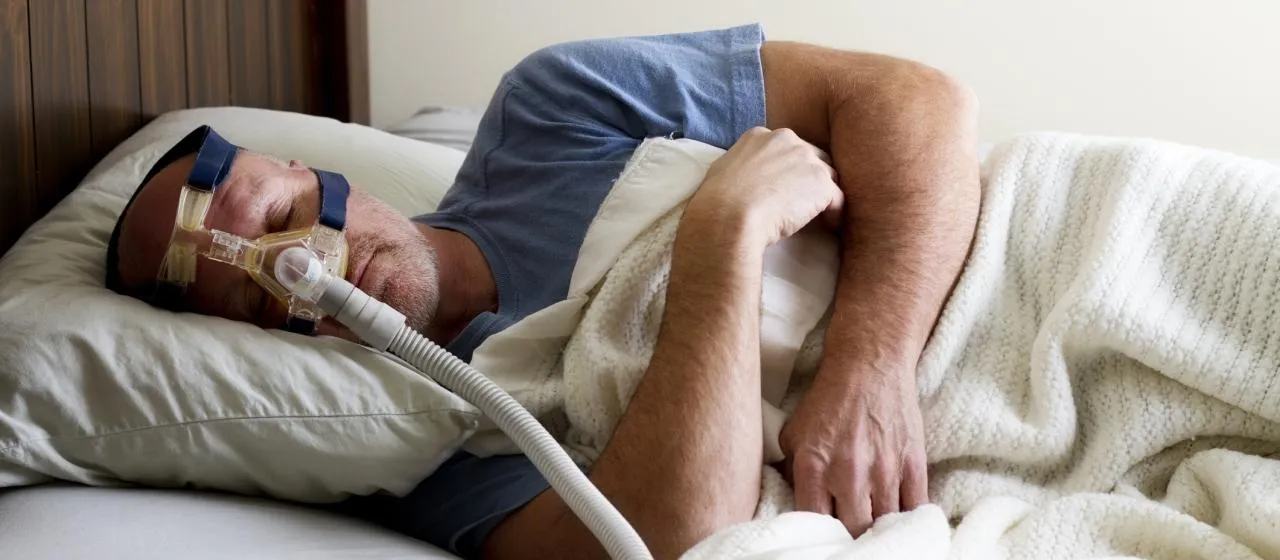OXIGEN salud
Respiratory conditions

OXIGEN salud
Respiratory conditions
Obstructive sleep apnea (OSA) is the most common breathing disorder that occurs during sleep.
It is characterized by repeated episodes of partial (hypopneas) or complete (apneas) obstruction of the upper airways, causing a temporary interruption of breathing.

Although these brief awakenings allow breathing to resume, they disrupt the sleep cycle and result in unrefreshing sleep.
These obstructions are usually caused by:
During these episodes, the lack of oxygen in the blood can be significant, triggering micro-awakenings that the patient usually does not notice.
Loud snoring is one of the most obvious symptoms of OSA, although not everyone who snores has sleep apnea. Other relevant symptoms include:
If you experience these symptoms, it is essential to consult a doctor for a proper diagnosis.
Obstructive sleep apnea syndrome not only affects the quality of sleep, but is also linked to various health complications, such as:
Furthermore, OSA increases the likelihood of traffic accidents due to daytime sleepiness and decreased reflexes.
Obstructive sleep apnea can affect anyone, including children and adolescents, although there are certain risk groups:
In Spain, it is estimated that between 6% and 8% of the population suffers from this disorder, although more than 80% of those affected are undiagnosed and do not receive adequate treatment.
There are different types of ventilators adapted to the needs of each patient:
If you think you might be suffering from sleep apnea or know someone who has the symptoms described, do not hesitate to seek medical help to get an evaluation and receive the necessary treatment.
Early intervention can make a difference in long-term health and well-being.
Sleep apnea in children is a breathing disorder that, as in adults, causes pauses in breathing during sleep.
In children, obstructive sleep apnea is often associated with enlarged tonsils or adenoids, although it can also be due to other factors such as obesity or craniofacial problems.
Central sleep apnea is a less common type of apnea that occurs when the brain fails to send the proper signals to the muscles responsible for breathing.
Unlike obstructive sleep apnea, in which the airway is blocked, in central sleep apnea there is no physical obstruction, but the patient momentarily stops breathing due to a breakdown in communication between the brain and the breathing muscles.
Both apneas and hypopneas are episodes in which breathing is interrupted during sleep, but the difference lies in the severity of the obstruction:
Sleep apnea is usually diagnosed through a sleep study or polysomnography.
This test measures brain activity, blood oxygen levels, eye movements, and breathing patterns while the patient sleeps.
Not necessarily. Although snoring is a common symptom of obstructive sleep apnea, not everyone who snores has apnea.
Snoring is caused by the vibration of tissues in the throat, but it is not always accompanied by pauses in breathing.
There is no definitive cure for sleep apnea, but available treatments are highly effective in controlling symptoms and improving quality of life.
Continued use of CPAP, along with lifestyle changes and, in some cases, surgical interventions, can significantly reduce apnea episodes and their consequences.
The most common treatment for sleep apnoea is continuous positive airway pressure (CPAP) delivered through a ventilator that fits into the nose. It consists of a mask attached to a turbine that delivers air at a set pressure, preventing the obstruction of the upper respiratory airways.
OXIGEN salud offers different kinds of ventilators to its patients, CPAP, APAP and BPAP, depending on which is the most convenient for their OSA treatment.
Shall we call you?